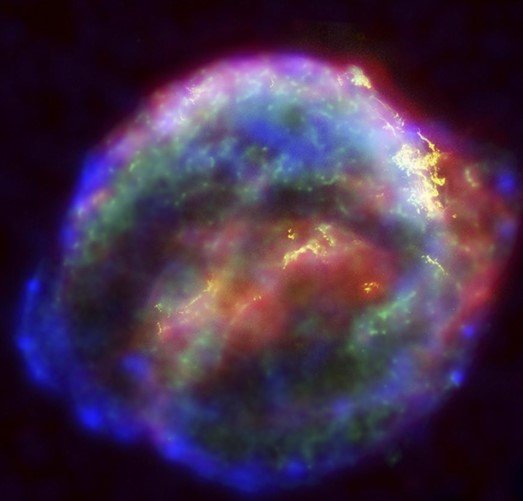Blaze Star Set to Light Up Night Sky for the First Time in 80 Years — No Telescope Needed
A rare cosmic spectacle is poised to grace the night sky — and you won’t even need a telescope to witness it.
Astronomers say T Coronae Borealis, also known as the Blaze Star, is on the brink of a nova explosion — a fiery outburst expected to light up the sky with the brilliance of the North Star, Polaris. The last time this happened? 1946.
A Once-in-a-Lifetime Sky Event
T Coronae Borealis is a recurrent nova system located around 3,000 light-years away in the constellation Corona Borealis. It consists of two stars locked in a deadly celestial dance:
-
A bloated red giant losing material, and
-
A dense white dwarf — roughly the size of Earth but with the mass of the Sun — greedily stealing hydrogen from its larger companion.
When the stolen hydrogen builds up too much on the white dwarf’s surface, it ignites in a powerful thermonuclear explosion, briefly making the system millions of times brighter.
“It will suddenly appear as a ‘new star’ in a part of the sky where nothing was visible before — and you’ll be able to see it with the naked eye,” scientists say.
How Bright Will It Be?
Astronomers estimate that when the Blaze Star erupts, it will shine at magnitude +2 — about as bright as Polaris (the North Star) — making it easily visible in dark skies without any equipment. After its outburst, it will gradually dim over the course of a week, fading from view for another eight decades.
When Will It Happen?
The exact timing is uncertain — but experts suggest it could happen any night now in April, or perhaps within the next few weeks. Once it begins, the explosion will last for about 7 days, making for a short but unforgettable window to catch it.

Where to Look?
📍 Constellation: Corona Borealis
🔭 Best viewed from: Northern Hemisphere
🕒 Timing: Just after sunset, away from city lights
🔍 Tip: Look between the constellations Boötes and Hercules. Use a star map or a stargazing app like SkySafari or Stellarium for easy spotting.
What Makes Blaze Star So Special?
| Feature | Details |
|---|---|
| Name | T Coronae Borealis (Blaze Star) |
| Type | Recurrent nova |
| Distance from Earth | ~3,000 light-years |
| Last eruption | 1946 |
| Visibility | Naked eye (brighter than most stars) |
| Duration of visibility | ~1 week after eruption |
Why It Matters
Unlike supernovae, which mark the death of a star, this nova is a cycle of cosmic renewal — the white dwarf survives, only to repeat the process in about 80 years.
It’s a celestial reminder of both the beauty and violence of the universe — and a chance for everyone, from amateur stargazers to seasoned astronomers, to share a front-row seat to something extraordinary.
So the next time you step outside after sunset, look up. The night sky might just surprise you.
